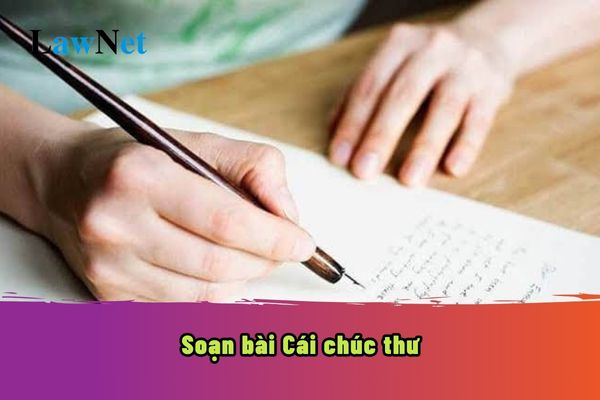Vietnam: What are the guidelines for preparing the lesson "Cái chúc thư"? Are 8th-grade students required to be able to recognize regulated verse and free verse?
What are the guidelines for preparing the lesson "Cái chúc thư"?
"Cái chúc thư" is a short comedy play that delivers profound meanings. The work successfully unveils the hidden corners of society and criticizes the bad habits and vices of humans.
Through the work, the author conveys messages about human compassion, sincerity, and selflessness.
8th-grade students can refer to the sample lesson "Cái chúc thư":
|
Guidelines for preparing the lesson "Cái chúc thư" I. General Understanding: |
*Note: The information is for reference purposes only./.

What are the guidelines for preparing the lesson "Cái chúc thư"? Are 8th-grade students required to be able to recognize regulated verse and free verse? (Image from the Internet)
Are 8th-grade students required to be able to recognize regulated verse and free verse?
Under the General education program in Literature issued with Circular 32/2018/TT-BGDDT, the regulations are as follows:
Required outcomes at the lower secondary education level
....
b) Literary competence
Identify and differentiate types of literary texts: stories, poetry, plays, memoirs, and some representative genres of each type; analyze the effects of some artistic form elements belonging to each literary genre; understand the explicit and implicit content of literary texts. Present impressions, thoughts on literary works, and their impact on oneself; initially create a number of products with literary qualities.
In grades 6 and 7: Recognize topics, understand the theme and significance of the read text; identify folk tales, short stories, lyrical poetry, and narrative poetry; recognize lyrical subjectivity, lyrical characters, and the expressive and perceptive values of literary works; recognize and analyze the effects of some form elements and artistic measures associated with each literary genre (plot, narrator's language, character's language, space, and time, rhyme, rhythm, imagery, and rhetorical devices such as metaphor, metonymy, hyperbole, understatement).
In grades 8 and 9: Understand the message, thoughts, feelings, and attitudes of the author in the text; recognize literary scripts, novels, and Nom narrative poems, regulated verse, and free verse, tragedy, and comedy; content and form of literary works, literary images; recognize and analyze the effects of some form elements and artistic measures belonging to each literary genre (the combination of narrator’s and character’s language, perspective, conflicts, poetic rules, structure, lexicon, lyrical emotional flow; rhetorical devices such as repetition, wordplay, sarcasm, oxymoron). Recognize some general aspects of the history of Vietnamese literature; understand the impact of literature on personal life.
Thus, 8th-grade students are required to be able to recognize regulated verse and free verse.
What literary knowledge does the 8th-grade Literature curriculum in Vietnam include?
Under Section 5 of the Appendix of the General Education Program for Literature, issued together with Circular 32/2018/TT-BGDDT, the literary knowledge in the 8th-grade Literature curriculum in Vietnam is specified as follows:
Literary Knowledge
1.1. Imagination in literary works
1.2. Titles and how to set them for texts
1.3. Themes and main topics, how to determine main topics; structure
2.1. Plot, setting, characters, and language in comedic and historical stories
2.2. Single-strand and multi-strand plots
2.3. Main artistic techniques of satirical poetry
2.4. Some elements of prosody in seven-word quatrains and four-line verses of Tang poetry: composition, discipline, rules, rhymes, rhythm, opposition
2.5. Some form elements of a poem: language, imagery, composition, emotional flow
2.6. Conflict, action, characters, dialogues, and satirical techniques in literary scripts (comedy)
2.7. Some form elements of free verse (six, seven syllables): number of lines, words, rhymes, rhythm
3.1. Readers and how they individually perceive a literary text
3.2. Content reflection and the author's perspective on life and humans

